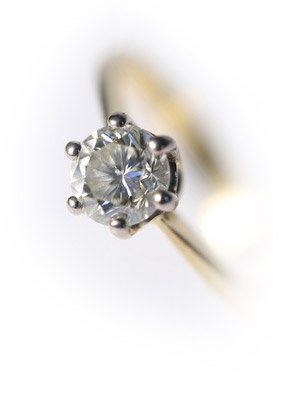
Red Rubies: A Timeless Symbol of Passion
At Videh, we offer a curated selection of red rubies, celebrated for their deep, fiery hues and timeless beauty. Universally accepted as red corundum, rubies owe their vibrant red color to high levels of the trace element chromium, the same element that imparts pink sapphires their color. The key difference lies in the saturation level, which determines whether the gemstone is classified as a ruby or a pink sapphire. In some Asian markets, rubies with traces of pink are acceptable, whereas, in European and North American markets, red and pink corundum are often categorized separately.
Color: The Defining Characteristic
Color is the most critical factor in evaluating a ruby, with transparency being the secondary consideration. Objective color determination for rubies has historically been challenging, with terms like "pigeon's blood," "pomegranate," "saffron," and "China rose" used to describe ruby colors. However, these terms lack universal recognition. Today, the ideal ruby color is considered to be a vivid, medium-dark red to slightly purplish red with a medium to mediumdark tone and either strong or vivid saturation. Rubies from Myanmar often exhibit a slight purple secondary color, while Thai rubies may display a "garnet red" color due to their dark tone. The ability of a ruby to fluoresce can intensify its color, with rutile needles reflecting light to enhance its hue further.
Unique Characteristics and Origins
A ruby's unique ability to fluoresce can sometimes help determine its origin. Burmese rubies, often formed in marble, tend to have fluorescence, whereas rubies from Thailand and Cambodia, formed in basaltic iron-rich rocks, do not. Like sapphires, rubies are graded by eye level rather than at 10x magnification, and a high-clarity ruby is considered "eye clean."
Myanmar, formerly known as Burma, is renowned for producing the highest quality rubies. Burmese rubies, primarily found in the Mogôk Valley and Möng Hsu, are celebrated for their intense color, silk, and strong fluorescence. The Mogôk Valley has been a ruby source for nearly a thousand years, while the Möng Hsu area was developed in the 1990s. Due to the 2008 U.S. Congress act banning the importation of Burmese jade and ruby, the prices of Burmese rubies have increased, making them even more valuable.
Sri Lanka, often called the "Island of Gems," has a rich history of gemstone formation. Sri Lankan rubies tend to be more brilliant, with lighter color tones that may include pink or purple secondary colors and higher clarity than rubies from other locations. These rubies also exhibit strong fluorescence, color zoning, and the presence of silk.
Other notable sources of rubies include Vietnam, Thailand, Afghanistan, Africa, Cambodia, India, Kashmir, Laos, Nepal, Pakistan, Tajikistan, and North Carolina in the United States.
At Videh, our collection of red rubies embodies the passion and elegance that these gemstones symbolize. Explore our exquisite selection to find the perfect ruby that resonates with your unique style and story.











